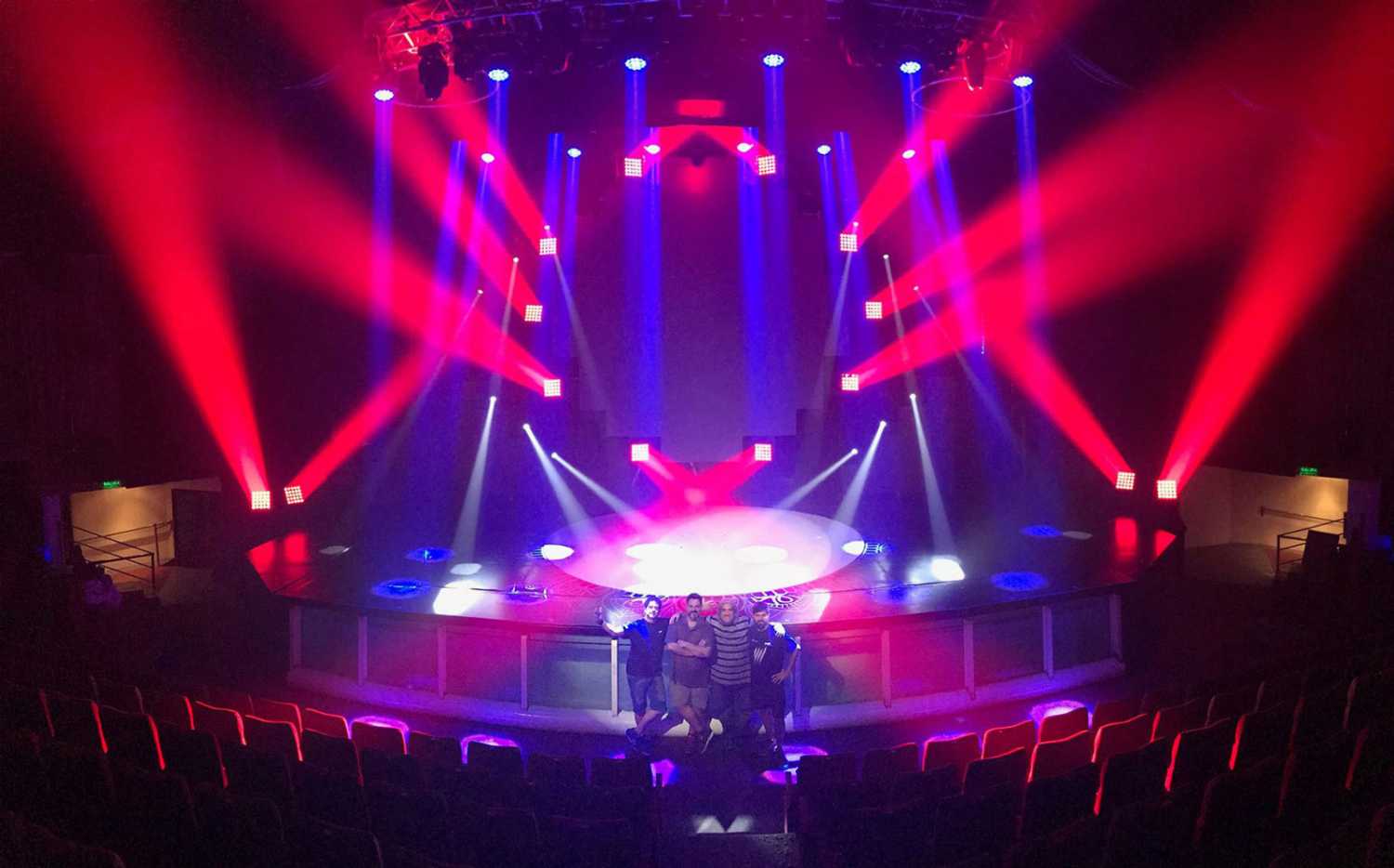Inspirational lighting for Mahatma
- Details

The show is Indian influenced, featuring a blend of exuberant and reflective music and dance capturing the humour, colour, diversity and wisdom of the culture in a vibrant and animated performance for which Ariel chose Robe moving lights as his principal fixtures.
Fourteen Spikies, 18 Spiiders and 16 Squares were on the rig at the Luxor – the first time all of these new fixtures made their theatrical debut in Argentina.
The big challenge in lighting the show, said Ariel, was to capture the many emotions and expressions, for which he needed some truly versatile lighting options.
A large amount of LED screen upstage also dictated that bright luminaires should be used that would cut through the high ambient light levels onstage. Added to this, several moving scenery pieces come in and out throughout, so lighting on the performers additionally needs to be fine-tuned to avoid shadows or other surprises or obstructions!
Flavio Mendoza himself was also keen to use the latest technologies on his show.
When Ariel first saw the Spiiders a month after their launch at LDI 2016, they were a must-have for the lighting plot, together with Spikies and Squares which he also saw for the first time at that same trade show.
He came back from Las Vegas enthusing to Flavio, and when CDM Productions from Buenos Aires was appointed as Mahatma’s technical supplier they made the investment in the new Spiiders, Spikies and Squares, which were supplied by Robe’s Argentinian distributor, TSD.
Seeing them at LDI was one thing, but when Ariel actually got them in front of him at the warehouse for the first time, he realised how much more creative he could be overall. He likes the “clear and precise colours and the large zoom” which allow him to create different spaces onstage and help develop the mood of each different segment.
The Spiider’s are all in the overhead rig. They offer multiple options both as a standard wash beam and for effects, helping to create the different environments and deepen the texture of the stage as a performance space.
Ariel originally intended to use Squares primarily at the back, so they could be programmed or mapped into patterns and shapes, but the power, the zoom function and the quality of the colour range led him to move some to the side boom positions. With up to 40 artists on the stage at times, this has been a real boost to the cross-stage coverage capabilities.
The Spikies were mounted at the back in between the screens with the intention of having a narrow beam emanating from the edges of the screen, giving a three dimensional element and some aerial movement coming in from behind cutting through the light coming off the screen.
(Jim Evans)












